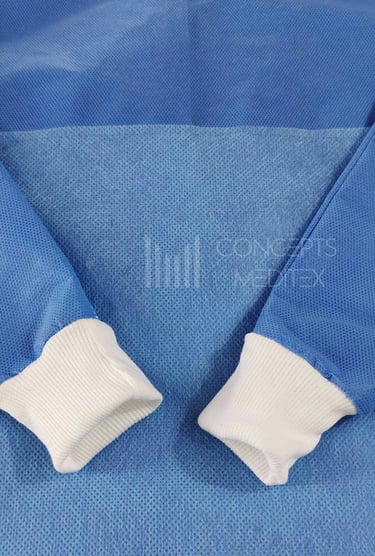Essential Criteria for Cuff Design in Manufacturing Surgical Gowns


Introduction
The manufacturing of surgical gowns is a critical aspect of healthcare that directly influences the comfort and efficiency of medical professionals. A key component of surgical gowns is the cuff design, which significantly impacts physical fitness during surgeries. In this article, we will explore essential criteria to consider when designing cuffs for surgical gowns to ensure better comfort and functionality.
Material Selection for Cuffs
Choosing the right material for cuffs is paramount in enhancing the comfort of a surgical gown. The material must be soft and flexible while maintaining durability and resistance to liquids. Fabrics such as cotton blends or specialized medical-grade textiles provide a comfortable barrier between the skin and the gown, preventing irritation during extended wear. Moreover, materials that offer stretchability can accommodate varied arm movements, crucial for surgeons and healthcare providers.
The fit of the cuffs plays a significant role in overall gown performance. Cuffs that are too tight can hinder circulation, leading to discomfort, while overly loose cuffs may compromise the sterile environment. A well-fitted cuff should have a proper elastic band or adjustable closure mechanism to ensure it remains secure yet comfortable around the wrist. This allows healthcare professionals to move freely while minimizing the risk of exposing the gown’s sleeve to contaminants.
Ease of Use and Adjustment
Another critical criterion to consider when manufacturing cuffs for surgical gowns is the ease of use and adjustment. Cuffs should be designed for quick and simple adjustments, allowing ease of donning and doffing, particularly in high-pressure environments. An effective closure system that doesn't require extensive handling is essential for maintaining sterility and reducing preparation time before surgical procedures.
Conclusion
In conclusion, the criteria for cuff design in surgical gowns are pivotal in ensuring the comfort and functional efficiency of medical personnel. By carefully selecting materials, ensuring a proper fit and elasticity, and facilitating ease of use, manufacturers can enhance the overall experience for healthcare professionals. Prioritizing these elements leads to improved physical fitness in surgical settings, ultimately benefiting patient outcomes and overall workflow in medical environments.
